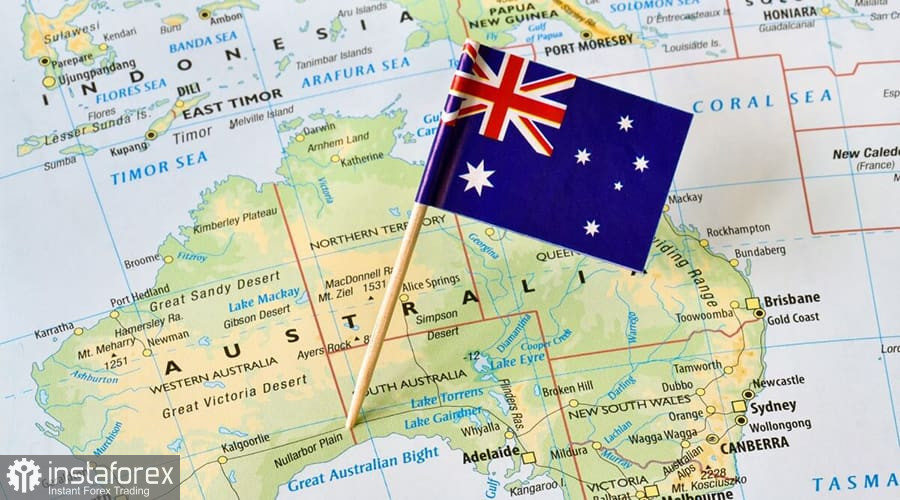The Australian dollar continues to decline. Last week, the AUD/USD pair fell by almost 150 points in response to the outcome of the Reserve Bank of Australia's April meeting and the US Nonfarm Payrolls report. On Friday, the aussie updated a two-week low, falling to 0.6644. At the start of the new trading week, the downward momentum subsided, but then it resumed with renewed vigor during the US session. This is partly due to the thin market: many trading platforms around the world are closed as the Catholic world celebrates Easter Monday. However, bears are also persistent for a reason, namely the strengthening of the risk-off sentiment in the markets.
Everyone is against the aussie
Following the RBA's April meeting, the Board decided to leave the interest rate unchanged at 3.60%. This is the first pause after ten consecutive rate hikes in the current cycle of monetary tightening. We can't say that this decision was entirely predictable: according to many experts, the probability of keeping things unchanged was estimated at about 70%. Therefore, the Australian dollar came under pressure, disappointing the bulls, who once again tried to approach the 0.68 figure.

Looking at the weekly chart, we can see that from late January to early March, the price was actively falling, losing a total of 600 points. In March, bulls took the initiative, pushing the price up by 200 points to the 0.67 figure. However, both bulls and bears seemed to run out of steam at this level.
Now, bears are trying to regain lost positions. The pair is declining due to the overall strengthening of the US dollar. The US dollar index soared to a 10-day high at the start of the US session. The greenback behaved this way due to two main reasons: the increase in hawkish expectations regarding the Federal Reserve's next actions (against the backdrop of fairly good Nonfarm Payrolls) and the increase in risk-off sentiment in the markets (amid recent events around Taiwan). The Australian dollar, in turn, is forced to follow the greenback after the RBA announced a pause in rate hikes.
The RBA's decision to keep the rate unchanged was accompanied by a statement that inflation in the country had most likely peaked, and a downtrend in the main inflation indicators is expected. Actually, this trend has already been observed since the beginning of this year: the latest reports on the consumer price index (for January and February) were in the red, reflecting a slowdown in inflation growth.
It is worth noting that the RBA has not completed the current cycle of monetary tightening, but has only paused the process. The central bank's statement indicates that it needs more time to assess the impact of tightening financing conditions on the economy and inflation levels. However, according to most experts, the RBA will return to raising the rate only if inflation starts to gain momentum again in a few months. So far, there are no signs of this happening.
While the probability of a Fed rate hike has risen to almost 70% (at present, the likelihood of a quarter point rate hike in May is estimated at 68%). The relatively good Nonfarm Payrolls report (unemployment rate dropped to 3.5%, number of employed increased by 236,000) has strengthened the confidence that the central bank will take another step towards tightening monetary policy. Inflation reports that will be published in the US on Wednesday, Thursday, and Friday (consumer price index, producer price index, and import price index) could shake this confidence if they end up in the red. But for now, the greenback feels quite comfortable against the Australian dollar, especially amid increased risk aversion in the markets.
Nervousness around Taiwan
Large-scale military maneuvers by the People's Liberation Army in the Taiwan Strait have alarmed not only politicians, but also representatives of the financial world. The military exercises were organized after Taiwanese President Tsai Ing-wen met with US House Speaker Kevin McCarthy in Los Angeles.
Chinese authorities react to any attempts by the island's administration to pursue its own foreign policy, so the rhetoric of Chinese officials has significantly hardened in recent times.
The tensions have also escalated in the United States. For example, the head of the Committee on Foreign Affairs of the US House of Representatives, Republican Michael McCaul, said the day before yesterday that the US would engage in military action against China "if Beijing tries to seize Taiwan by force." Such statements have worried market participants - among other risky currencies, the Australian dollar was affected.
Conclusions
The bears managed to organize a counter attack due to the strengthening of anti-risk sentiment, that is, thanks to the strengthening of the US currency. However, if the US inflation reports turn out to be worse than expected, the greenback may come under pressure again.
Therefore, at the moment, we cannot talk about the prospects of the downtrend: inflation can "repaint" the fundamental background for the AUD/USD pair. The nearest target of the downward movement is the level of 0.6600 (the lower line of the Bollinger Bands indicator on the daily chart). The next support level is located 100 points lower - at the level of 0.6500 (also the lower line of the Bollinger Bands, but already on the weekly chart), but this target will be achievable only if inflation indicators please the dollar bulls with their "green color".





















